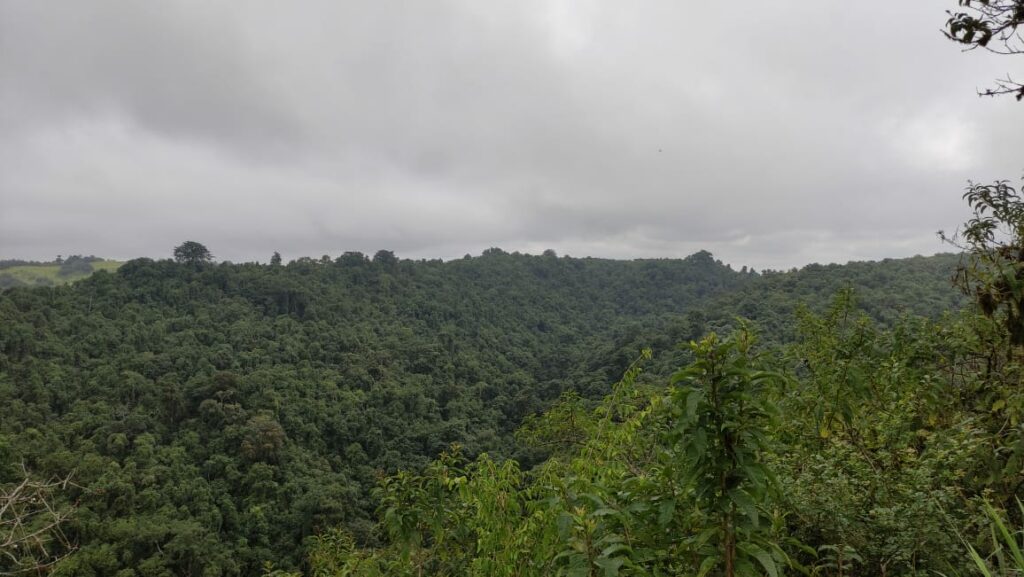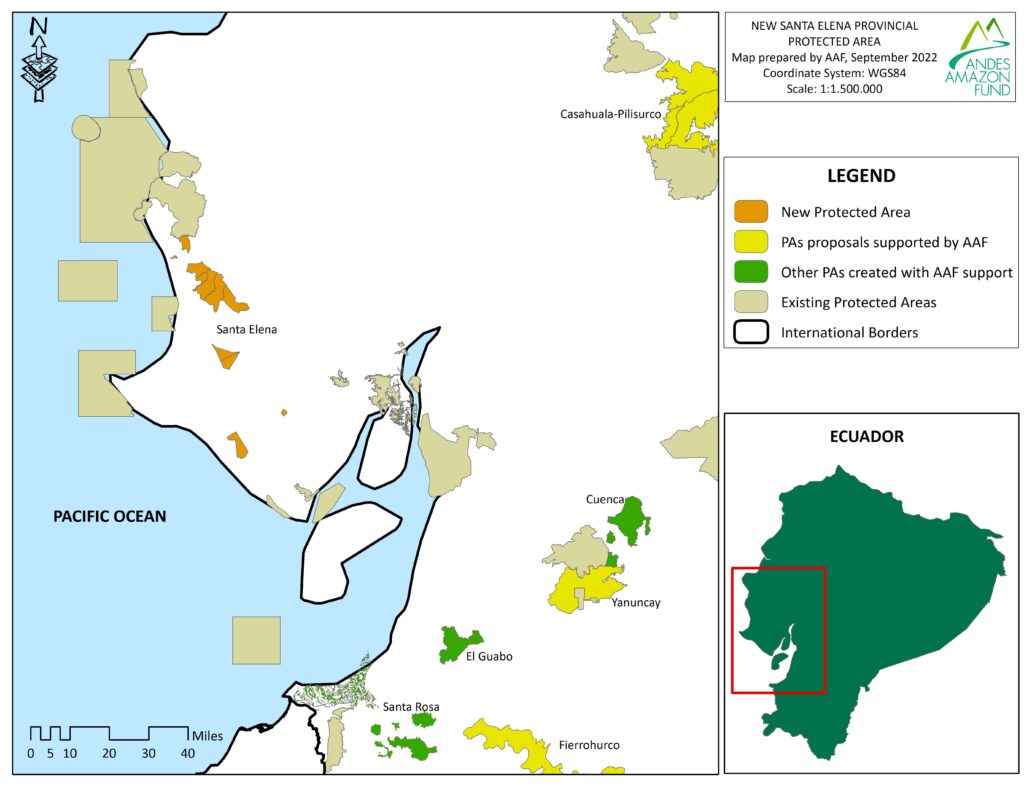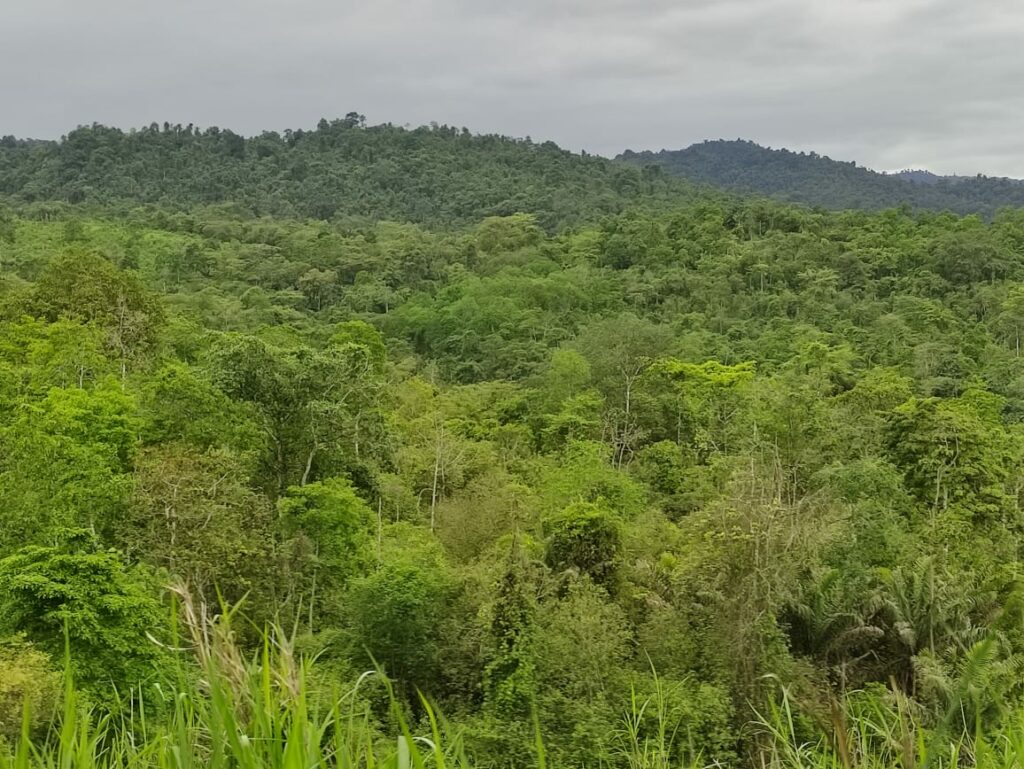
Edit: As of January 19th, 2023, the Santa Elena Provincial Protected Area now spans 100,230 acres (40,562 hectares).
Edit: As of June 30th, 2023, the Santa Elena Provincial Protected Area now spans 109,914 acres (44,481 hectares).
Andes Amazon Fund celebrates the creation of the Santa Elena Provincial Protected Area, located in the coastal forests of southwestern Ecuador.
The Provincial Council of Santa Elena unanimously approved the declaration of the Provincial System of Conservation and Sustainable Use Areas (SPACUS is the Spanish acronym) of Santa Elena on August 31st, 2022. The declaration officially approved the first conservation block, protecting 79,350 acres (32,112 ha). The eventual goal is to conserve 277,870 acres (112,450 hectares). The SPACUS conserves both dry and humid forests that are home to a high diversity of plants and animals, and safeguards the principal source of water for the entire province. “It is very important for us to have these Areas of Conservation and Sustainable Use since Santa Elena does not have its own water reserves. The only water source is the forest,” said Bertha Carpio, Director of Environmental Management of the Province of Santa Elena.

The SPACUS will protect over 80% of the province’s native forest. This includes the protective forest (bosque protector) of the Cordillera Choncón Colonche and the remnants of eight biodiverse terrestrial ecosystems. These forests are home to approximately 171 species of birds and 37 species of mammals. The true numbers are estimated to be higher, as the area requires further scientific research.

Preserving Spaces for Large Mammals such as Jaguars and Tourists
Santa Elena is located within the Tumbesian Bird Endemism Area, an expanse that boasts one of the highest numbers of endemic bird species in the world. 56 unique species of birds have been recorded in the area, drawing in thousands of tourists and bird watchers each year. It is also home to iconic species, such as the Esmeraldas hummingbird (Chaetocercus berlepshi), and critically endangered species such as the Guayaquil Parrot (Ara ambiguus).
The SPACUS conserves one of the last remaining coastal forests in Ecuador. This region has the fewest protected areas in the country, and faces increasing deforestation due to the expansion of agriculture. Habitat fragmentation due to the loss of forests strains the populations of large mammals such as the jaguar, puma, and capuchin monkey, which depend on expansive habitats in order to survive. The creation of the Santa Elena Provincial Protected Area maintains an important corridor for these animals to move safely between conservation areas.

Safeguarding the Primary Water Sources of Santa Elena
In addition to storing 17 million tons of carbon and contributing to the mitigation of a changing climate, The SPACUS also protects 97.5% of Santa Elena’s water sources. Santa Elena is one of the provinces with the highest susceptibility to drought due to a changing climate, according to the National Drought Plan 2021-2030. The SPACUS intends to sustain the long-term quality and quantity of water for local inhabitants. The safeguarding of Santa Elena’s water also benefits the local economy, as the region’s tourism and food production industries rely on the same water sources.
Acknowledgements
The creation of the Santa Elena Provincial Protected Area was made possible by the Provincial Government of Santa Elena and 32 local communities, in collaboration with AAF grantees Nature and Culture International and the PASOS Foundation.
Discover how locals are protecting their forests one Paja Toquilla hat at a time. [In Spanish]
MAKE AN IMPACT
Learn how we can make an impact in our world together. Donate or get involved by subscribing to our email list:
